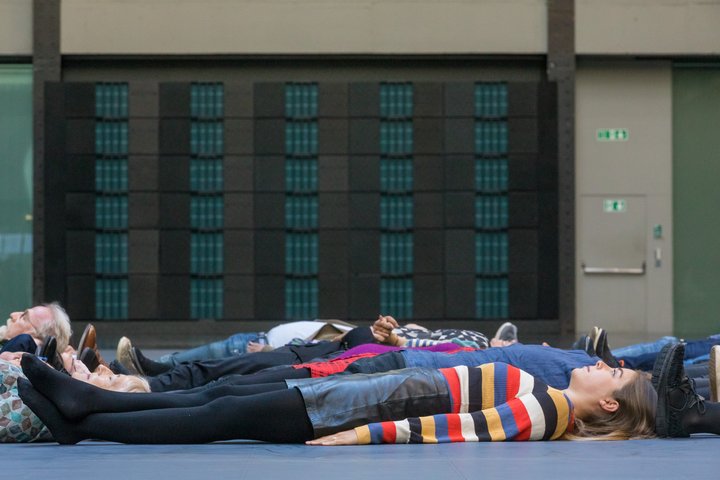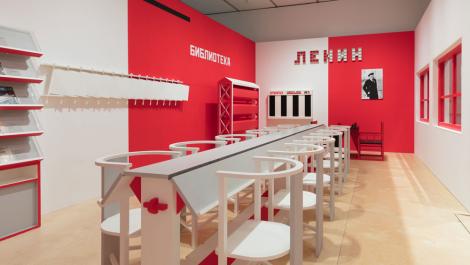CAA News Today
Support the Arts and Humanities
posted by CAA — November 05, 2018
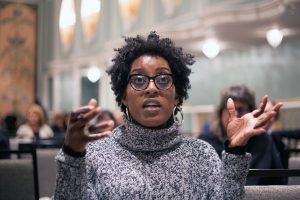
Curator and anthropologist Niama Safia Sandy at the 2017 CAA Annual Conference in New York. Photo: Ben Fractenberg
CAA needs your help to advance the programs and support we provide to the individuals and institutions that comprise the world’s largest international professional community in the visual arts. Bringing innovative new ideas and meaningful experiences to artists, designers, crafters, curators, art historians, critics, students and faculty members is always on the forefront of our minds, but we cannot do it alone.
We have over 9,000 members, but did you know that approximately half of our members are artists, students, retirees, and part-time faculty, who have subsidized memberships and conference registrations?
These members, and all members, have full access to CAA programs such as:
- Professional Development Fellowships and Publishing Grants
- Awards of Distinction
- Professional Development Podcasts
- Online Career Center
- Advocacy, Fair Use, and Standards & Guidelines
- Resources for Academic Art Museum Professionals (RAAMP)
We advocate and design programs for all our members, regardless of how much they pay in membership, and we hope that as in all strong communities, those that can help will.
A donation to the Annual Fund allows CAA to provide the much-needed support for the field at the individual level and to institutions. A contribution gives CAA more power to advocate and serve the ever-changing needs of our members.
Our Travel Fund assists ten students and scholars from across the country and around the world to attend the Annual Conference each year, but gifts directed towards this category will increase that number exponentially.
A contribution to the Publication Fund helps offset the cost to produce the print and online scholarly publications of The Art Bulletin, Art Journal, Art Journal Open, and caa.reviews.
Please consider a tax-deductible donation in either fund category that will help us better serve the visual arts community. No matter what fund category you choose, your support will go a long way in making a difference.
On behalf of the Board of Directors and staff of CAA, I thank you for your generosity.
Best regards,

Hunter O’Hanian
Executive Director and CEO
Natasha Hovey and Steve Hilton
posted by CAA — November 05, 2018
The weekly CAA Conversations Podcast continues the vibrant discussions initiated at our Annual Conference. Listen in each week as educators explore arts and pedagogy, tackling everything from the day-to-day grind to the big, universal questions of the field.
CAA podcasts are now on iTunes. Click here to subscribe.
This week, Natasha Hovey and Steve Hilton discuss a yearlong artist residency model at Midwestern State University.
Natasha Hovey is currently an assistant professor at Texas A&M International University in Laredo, Texas, where she teaches: Ceramics 1, Intermediate and Advanced Ceramics, Sculpture 1, Intermediate and Advanced Sculpture, and Practicum Course for Seniors. She never thought she would miss it, but she longs for the Midwest’s subzero temps and feet of snow.
Steve Hilton is a professor of art at the Lamar D. Fain College of Fine Arts at Midwestern State University in Wichita Falls, Texas, teaching both Ceramics and Art Education. He just found out that the current MSU ceramics resident has been offered a full-time position, which means the MSU residency program is 6 for 6 in placing residents.
CAA Announces 2019 CAA-Getty International Program Participants
posted by CAA — November 02, 2018
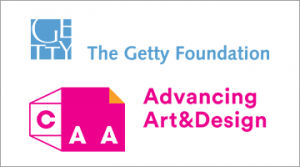
CAA is pleased to announce this year’s participants in the CAA-Getty International Program. Now in its eighth year, this international program supported by the Getty Foundation will bring fifteen new participants and five alumni to the 2019 Annual Conference in New York City. The participants—professors of art history, curators, and artists who teach art history—hail from countries throughout the world, expanding CAA’s growing international membership and contributing to an increasingly diverse community of scholars and ideas. Selected by a jury of CAA members from a highly competitive group of applicants, participants will receive funding for travel expenses, hotel accommodations, conference registration, CAA membership, and per diems for out-of-pocket expenditures.
At a one-day preconference colloquium, to be held this year at Parsons School of Design, the fifteen new participants will discuss key issues in the international study of art history together with five CAA-Getty alumni and several CAA members from the United States, who also will serve as hosts throughout the conference. The preconference program will delve deeper into subjects discussed during last year’s program, including such topics as postcolonial and Eurocentric legacies, interdisciplinary and transnational methodologies, and the intersection of politics and art history.
This is the second year that the program includes five alumni, who provide an intellectual link between previous convenings of the international program and this year’s events. They also serve as liaisons between CAA and the growing community of CAA-Getty alumni. In addition to serving as moderators for the preconference colloquium, the five alumni will present a new Global Conversation during the 2019 conference titled Creative Pedagogy: Mapping In-between Spaces Across Cultures.
The goal of the CAA-Getty International Program is to increase international participation in the organization’s activities, thereby expanding international networks and the exchange of ideas both during and after the conference. CAA currently includes members from over 50 countries around the world. We look forward to welcoming the following participants at the next Annual Conference in New York City.
2019 PARTICIPANTS IN THE CAA-GETTY INTERNATIONAL PROGRAM
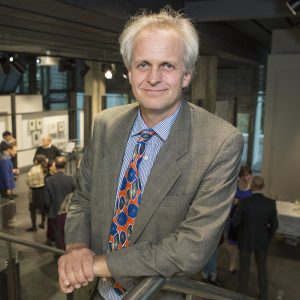
Richard Bullen is associate professor of art history at the University of Canterbury, New Zealand. He graduated with a PhD from the University of Otago in 2003. Bullen’s principal areas of research are Japanese aesthetics and East Asian art collections in New Zealand. During his years living in Japan, he studied tea ceremony and calligraphy and has since published on aspects of tea ceremony aesthetics. With James Beattie he recently completed a major publicly-funded project to document New Zealand’s largest collection of Chinese art, the Rewi Alley Collection at Canterbury Museum. Their website catalogues all 1400 objects in the collection: http://www.rewialleyart.nz. Together, they also have produced a number of publications, including New China Eyewitness: Roger Duff, Rewi Alley and the Art of Museum Diplomacy (2017) and co-curated three exhibitions. Bullen is currently working on art made in World War II by Japanese POWs held in Australasia.
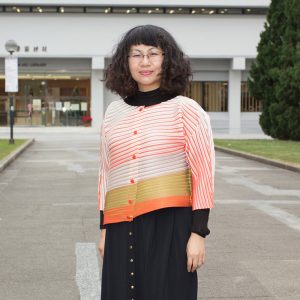
Pedith Chan is an assistant professor of Cultural Management in the Faculty of Arts at the Chinese University of Hong Kong. She received her PhD in Art and Archaeology from SOAS, University of London. Before joining the Chinese University of Hong Kong Chan was an assistant curator at the Hong Kong Museum of Art, and an assistant professor at the City University of Hong Kong. Her research interests focus on the production and consumption of art and cultural heritage in modern and contemporary China. Recent publications include The Making of a Modern Art World: Institutionalization and Legitimization of Guohua in Republican Shanghai (Leiden: Brill, 2017), “Representation of Chinese Civilization: Exhibiting Chinese Art in Republican China,” in The Future of Museum and Gallery Design (London: Routledge, 2018), and “In Search of the Southeast: Tourism, Nationalism, Scenic Landscape in Republican China,” (Twentieth-Century China, 2018). She is currently researching the making of scenic sites in modern China.
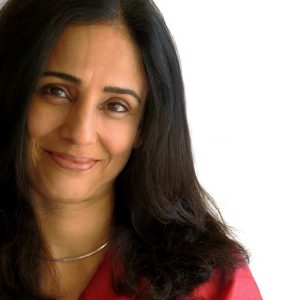
Swati Chemburkar is an architectural historian who lectures and directs a diploma course on Southeast Asian Art and Architecture at Jnanapravaha, a center for the arts in Mumbai, India. In addition, she is a visiting lecturer at the School of Oriental and African Studies (SOAS), London, and SOAS’s summer schools in Southeast Asian countries. Chemburkar’s work focuses on eighth- through twelfth-century Southeast Asia, particularly the relationship between texts, rituals, art, architecture, and cross-cultural exchanges in maritime Asia. Her ongoing research explores the spread of the ancient Śaiva sect of Pāśupatas in this region. She has edited Art of Cambodia: Interactions with India (Marg Magazine, Volume 67 Number 2, December 2015-March 2016) and contributed papers to several journals and publications, including the recent “Visualising the Buddhist Mandala: Kesariya, Borobudur and Tabo” in India and Southeast Asia: Cultural Discourse (K. R. Cama Oriental Institute, Mumbai, 2017) and “Pāśupata Sect in Ancient Cambodia and Champa” (co-authored with Shivani Kapoor) in Vibrancy in Stone: Masterpieces of the Đà Nẵng Museum of Cham Sculpture (River Books, 2017).
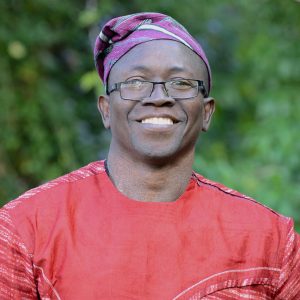
Stephen Fọlárànmí is a senior lecturer in the Department of Fine & Applied Arts, Ọbáfémi Awólọ́wọ̀ University, Ilé-Ifè, Nigeria. His research focuses on Yoruba art and African mural art and architecture. In particular, Fọlárànmí’s extensive research on the art and architecture of the Òyó and Iléṣà palaces has been published in journals, conference proceedings, and as book chapters. A recent example, “Palace Courtyards in Iléṣà: A Melting Point ofTraditional Yorùbá Architecture,” co-authored with Adémúlẹ̀yá, B.A., was published in Yoruba Studies Review 2, no. 2 (Spring 2018): 51-76. Fọlárànmí was a recipient of the first Höffmann-Dozentur für Interkulturelle Kompetenz at University of Vechta, Germany (2008-09). As an artist Fọlárànmí has exhibited his work in Nigeria, London, Germany, and the United States. He was the chair of the Department of Fine and Applied Arts, Obafemi Awólọ́wọ̀ University, Ile-Ife, between August 2016 and January 2018. Currently, he is a research fellow in the Fine Arts Department, Rhodes University, Grahamstown, South Africa.
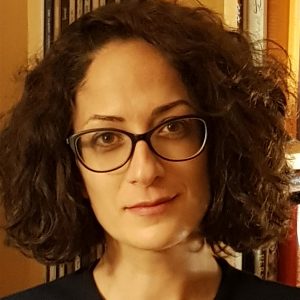
Negar Habibi is a Persian art historian and lecturer in Islamic art history at the University of Geneva, Switzerland, where she teaches history of Persian painting from early Islamic times until the modern era. She completed a PhD in 2014 in art history at the Aix-Marseille University in France with a dissertation titled “The Farangi sāzi and Paintings of Ali Qoli Jebādār: an Artistic Syncretism under Shah Soleymān (1666-1694).” Habibi conducts research on paintings from early modern Iran. Adopting a multidisciplinary approach, her work focuses on the career and life of the artist, especially issues of signature authenticity, gender, and artistic patronage in early modern Iranian society. She has published several articles on the art and artists of late-seventeenth-century Iran, and her book titled Ali Qoli Jebādār et l’occidentalisme safavide: une étude sur les peintures dites farangi sāzi, leurs milieux et commanditaires sous Shah Soleimān (1666-94) was published in January 2018 by Brill.
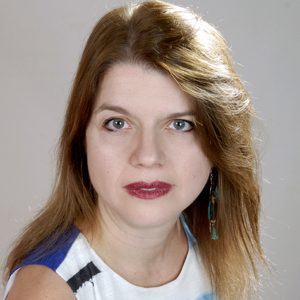
Iro Katsaridou has been the curator of modern and contemporary art at the Museum of Byzantine Culture in Thessaloniki, Greece since 2005. She studied art history at the Aristotle University of Thessaloniki and the Université Paris I-Sorbonne, and also pursued museum studies at the City University of New York. Her doctoral dissertation (Aristotle University, 2010) focused on contemporary Greek photography from 1970-2000. For the past five years Katsaridou has been researching historical photography in Greece, seeking to unravel the role of politics in the formation of photographic representations. In this particular field she also has curated exhibitions of photography and art in wartime (World War I and II) and edited related catalogues. She has co-edited a book about photography during the Nazi Occupation of Greece (1941-1944) and written articles and book chapters on photography (both historical and contemporary), exhibition display policies, as well as the relationship between contemporary Greek art and politics.
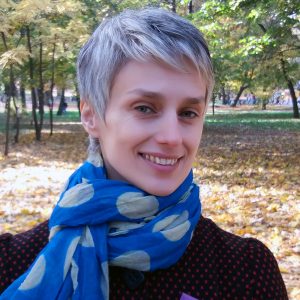
Halyna Kohut is an associate professor in the Faculty of Culture and Arts at the Ivan Franko National University of Lviv, Ukraine, where she teaches history of art, contemporary art, and history of theatrical costume. Originally educated as a textile artist, she received a PhD from the Lviv National Academy of Arts with a dissertation on seventeenth- and eighteenth-century Ukrainian kilims. She is the recipient of scholarships and grants from the Austrian Agency for International Mobility and Cooperation in Education, Science and Research, the Canadian Institute of Ukrainian Studies at the University of Alberta, and the Queen Jadwiga Foundation at the Jagiellonian University in Cracow. Kohut studies Ukrainian kilims as an intermediate zone between Oriental and Western design traditions formed on the so-called Great cultural frontier between the Christian West and Islamic East. She is especially interested in the migration of ornamental patterns as well as the articulation of textile’s social and political meanings in the historical context.
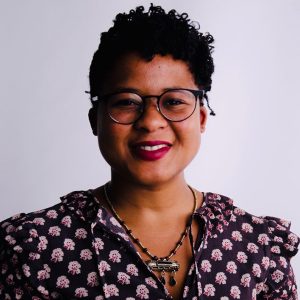
Zamansele Nsele is an art historian and a lecturer in design studies in the Faculty of Art, Design and Architecture at the University of Johannesburg, South Africa. She recently submitted her doctoral thesis in Art History & Visual Culture, titled Post-Apartheid Nostalgia and the Future of the Black Visual Archive. In 2018, Nsele was included in the Mail & Guardian’s prestigious list of Top 200 Young South Africans. She has presented her PhD research at Vanderbilt University and Rutgers University (USA), the University of East Anglia (UK), the University of Ghana in Accra (Ghana), and Rhodes University and the University of Cape Town (South Africa). In July 2018, she was a guest speaker at the Museum Conversations Conference hosted by the University of Namibia and the Goethe-Institut Namibia. Her research interests include post-Apartheid nostalgias, contemporary African art, blackface minstrelsy in South African visual culture and Africana studies.
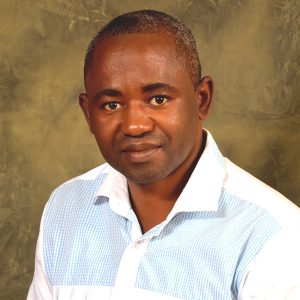
Chukwuemeka Nwigwe is a Nigerian artist and art historian who teaches fashion/textile design and art history at the University of Nigeria Nsukka. He holds a PhD in art history, MFA in textile design, and BA in fine and applied arts from the same university. Nwigwe’s current research is on identity, exemplified in two recent publications: “Fashioning Terror: The Boko Haram Dress Code and the Politics of Identity” (Journal of Fashion Theory, January 2018) and “Breaking the Code: Interrogating Female Cross Dressing in Southeastern Nigeria” (posted online as part of a 2018 ACLS African Humanities Program Postdoctoral Fellowship). Nwigwe also practices as a studio artist. His recent studio experiments with waste plastic, synthetic bags, and foil wrappers, usually woven arbitrarily, have been influenced largely by his research on bird nests begun during his MFA studies.
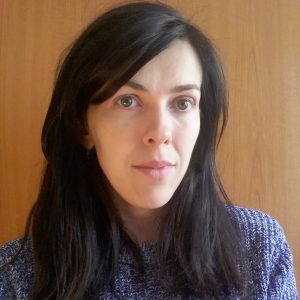
Oana Maria Nicuță Nae is an assistant professor in the Department of Art History and Theory, Faculty of Visual Arts and Design, George Enescu National University of Arts, Iasi, Romania. She received a PhD in art history from the same university, where she currently teaches courses on the history of modern European art, the history of design, and art and society in modern Europe. Most recently she published “The Materialization of Light in the Art of the (Neo-) Avant-Gardes,” in Objects and Their Traces: Historical Gazes, Anthropological Narratives, Cristina Bogdan, Silvia Marin Barutcieff (coord.), Bucharest University Press (Bucharest, 2018). Nicuță Nae’s current research focuses on the representation of women in Romanian modern art. She also studies multiple modernities, taking into account the particular position of Romanian art narratives in regional and global attempts to construct encompassing ones. Recently she has started parallel research on the notion of influence in nineteenth-century Romanian and European art.
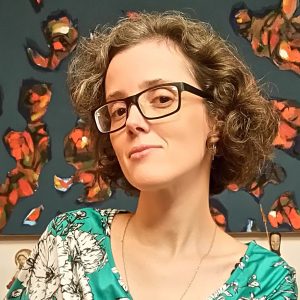
Tamara Quírico is an associate professor in the Art Institute of the Universidade do Estado do Rio de Janeiro (State University of Rio de Janeiro, UERJ, Brazil), where she teaches courses to undergraduate students majoring in art history and visual arts and art history courses to graduate students pursuing MA and PhD degrees. She earned her PhD in social history from the Universidade Federal do Rio de Janeiro, in a joint supervision program with the Università di Pisa (Italy), in which she studied changes in the iconography of the Last Judgment in fourteenth-century Tuscan painting. Her dissertation, “Inferno and Paradiso: Representations of the Last Judgment in Fourteenth-Century Tuscan Painting,” was published in Portuguese in 2014. Quírico studies Italian paintings from the thirteenth and fifteenth centuries, focusing in particular on the uses and functions of Christian images, as well as devotional practices and exchanges between Christian images from Europe and Spanish America.

Juliana Ribeiro da Silva Bevilacqua is a specialist in African and Afro-Brazilian art. She studied at the University of São Paulo, where her PhD dissertation was on the Museu do Dundo in Angola (1936–61). From 2004–14 she worked as a researcher at the Museu Afro Brasil in São Paulo. She collaborates with different museums in Brazil researching African art and Afro-Brazilian art collections, including the Museu de Arte de São Paulo and the Museu de Arqueologia e Etnologia at the University of São Paulo. In 2015 she was a guest editor of Critical Interventions: Journal of African Art History and Visual Culture in an issue dedicated to Afro-Brazilian Art. Since 2017 she has been a professor collaborating with the graduate program in Art History at the University of Campinas (Unicamp). Recently she was a visiting professor at the Universidad de Los Andes, Bogota, Colombia, in the Connecting Art Histories program sponsored by the Getty Foundation.
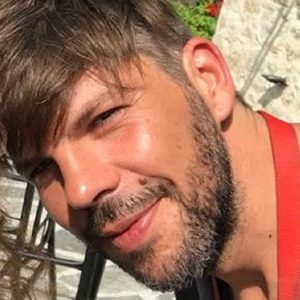
Marko Stamenkovic, born in the former Yugoslavia, is an associate curator of ZETA Contemporary Art Center in Tirana, Albania. He is an art historian and transcultural theorist with a strong interest in the decolonial politics of race, ethnicity, and sexuality. Over the past decade, he has been working primarily in the field of contemporary visual arts as a freelance curator, critic, and writer focused on the intersection of visual thinking and social theories, political philosophies, and cultural practices of the marginalized and the oppressed. He holds a PhD in philosophy from Ghent University (Belgium) where he worked on questions of sacrifice, self-sacrifice in protest, and suicide to explore the relationship between human mortality and politico-economic powers on the darker side of democracy, from a perspective of the global South. He is a member of AICA (International Association of Art Critics) and IKT (International Association of Curators of Contemporary Art).
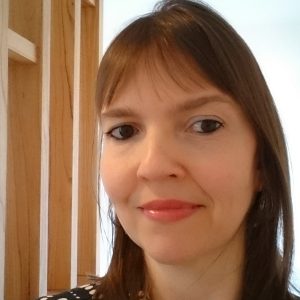
Viviana Usubiaga holds a PhD in art history from the Universidad de Buenos Aires (UBA) in Argentina. She is an associate professor of contemporary art at the Universidad Nacional de San Martín and an assistant professor of modern and contemporary art history at UBA. Usubiaga is also an adjunct researcher of the Consejo Nacional de Investigaciones Científicas y Técnicas (CONICET) and a board member of the Centro Argentino de Investigadores de Arte (CAIA). Her fields of interest include visual arts, literature, and museum studies, focusing on the political impact of transnational circulation of artistic images and texts during socially traumatic periods, including dictatorships and post-dictatorships in South America. Being a specialist in resistance art practices and institutional cultural politics, Usubiaga is the author of Imágenes inestables. Artes visuales, dictadura y democracia en Buenos Aires (2012). She also organizes independent curatorial projects in which she experiments with using scholarly methodologies in non-academic or non-specialist settings.
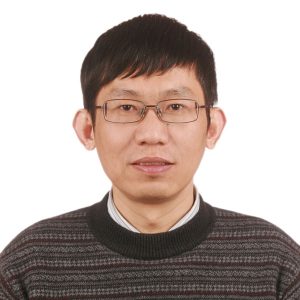
Jian Zhang was born in Hangzhou, China, and earned his PhD in art theory and history from the China Academy of Art, Hangzhou. He is a professor of art history at the School of Art and Humanities as well as the chief librarian of the Academy Library at the same university. His present research focuses on expressionism (formalism) in modern art historiography as well as the problem of its modernity. He is the author of Life of the Visual Form of Art, The History of the Western Modern Art, and An Alternative Story: Expressionism in the Western Modern Art Historiography, and also the translator of the Chinese edition of Wilhelm Worringer’s Form in Gothic, Heinrich Wolfflin’s The Sense of Form in Art: A Comparative Psychological Study (Italien und das deutsche Formgefühl) and Conrad Fiedler’s On Judging Works of Visual Art.
PARTICIPATING ALUMNI
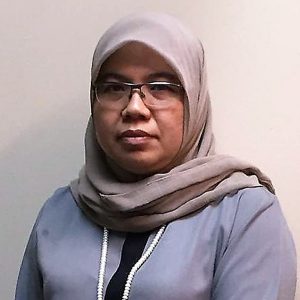
Sarena Abdullah is a senior lecturer in the School of the Arts at the Universiti Sains Malaysia in Penang, where she teaches art history to undergraduate and graduate students. She received an MA in art history from the University at Buffalo, State University of New York, and a PhD in art history from the University of Sydney in Australia. Specializing in contemporary Malaysian art with a broader interest in Southeast Asian art, Abdullah was the inaugural recipient of the London, Asia Research award given by Paul Mellon Center (London) and Asia Art Archive (Hong Kong). Her book Malaysian Art since the 1990s: Postmodern Situation was published in 2018, as was Ambitious Alignments: New Histories of Southeast Asian Art, for which she was a co-editor, published by the Power Institute and National Gallery Singapore. She first participated in the CAA-Getty International Program in 2016 and presented a paper as part of the program’s reunion during the 2017 conference.
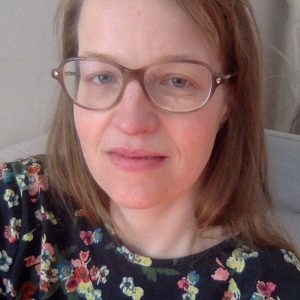
Katarzyna Cytlak is a Polish art historian based in Buenos Aires, Argentina, whose research focuses on Central European and Latin American artistic creations in the second half of the twentieth century. She studies conceptual art, radical and utopian architecture, socially engaged art, and art theory in relation to post-socialist countries from a transmodern and transnational perspective. In 2012, she received a PhD from the University Paris 1 Panthéon-Sorbonne, France. Cytlak was a postdoctoral fellow at the CONICET – National Scientific and Technical Research Council, Argentina (2015-2017). She is currently working as a researcher and professor at the Center for Slavic and Chinese Studies, University of San Martín, Argentina. Selected publications include articles in Umění/Art, Eadem Utraque Europa, Third Text, and the RIHA Journal. Cytlak is a grantee of the University Paris 4 Sorbonne (Paris), the Terra Foundation for American Art (Chicago, Paris) and the Institut National d’Histoire de l’Art (INHA, Paris). In 2018, she participated in the CAA-Getty International Program.

Nadhra Khan is a specialist in the history of art and architecture of the Punjab from the sixteenth to the early twentieth century. She received a PhD from the University College of Art & Design, University of the Punjab, Lahore, and teaches art history at Lahore University of Management Sciences, Lahore, Pakistan. Khan’s research focuses on the visual and material culture of the Punjab region during the Mughal, Sikh, and colonial periods. Her publications address several misconceptions and misrepresentations of Mughal and Sikh art and architecture as well as the state of art and craft in the Punjab under the British Raj and reflect the wide range of her interests and expertise.

Nazar Kozak is a senior research scholar in the Department of Art Studies in the Ethnology Institute at the National Academy of Sciences of Ukraine. Previously he also taught the history of art at the Ivan Franko National University of Lviv. Kozak has received scholarships and grants from the Fulbright Scholar Program, State Scholarships Foundation of Greece, the American Council of Learned Societies, the Austrian Agency for International Mobility, and the Shevchenko Scientific Society in the United States. Kozak’s primary research is on Byzantine and post-Byzantine art in Eastern Europe. He is the author of Obraz i vlada: Kniazhi portrety u mystetstvi Kyïvskoï Rusi XI stolittia (Image and authority: Royal portraits in the art of Kyivan Rus’ of the eleventh century, Lviv, 2007). More recently, he has begun to work on contemporary activist art. His article on the art interventions during the Ukrainian Maidan revolution was published in the Spring 2017 issue of the Art Journal; it received an honorable mention as a finalist for that year’s Art Journal Award. Kozak participated in the CAA-Getty International Program in 2015 and presented a paper as part of the program’s reunion during the 2017 conference.
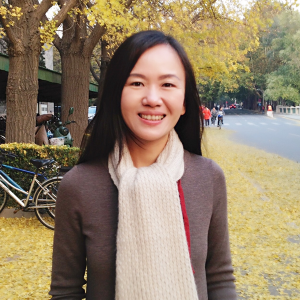
Chen Liu teaches art history and architecture at Tsinghua University in Beijing, China, where she received a bachelor’s degree in architecture with honors. After receiving a master’s in architecture and urban planning from the University of Maryland in 2000, she practiced as an architect in Washington DC until 2005. In 2011, she received a PhD in art history from Princeton University, specializing in Renaissance and Baroque art and architecture. In 2012, funded by an Andrew W. Mellow Fellowship, she helped create and direct the first Villa I Tatti summer research seminar designed specifically for Chinese scholars. “The Unity of the Arts in Renaissance Italy” provided participants with the opportunity to study firsthand the art and architecture of Renaissance Italy. Liu also teaches courses on the visual arts at Beijing Film Academy and Tongji University (Shanghai). She publishes widely on early modern art and architecture, as well as on the response of Chinese scholars to the Italian Renaissance. For the academic year 2018-2019 Liu is a Harvard-Yenching Institute Visiting Scholar at Harvard University.
CWA Picks for November 2018
posted by CAA — November 01, 2018
CAA’s Committee on Women in the Arts selects the best in feminist art and scholarship to share with CAA members on a monthly basis. See the picks for November below.
TAMMIE RUBIN: Solo Exhibition
November 17, 2018 – January 10, 2019
Women and Their Work (Austin)
Tammie Rubin’s handcrafted objects depict explorations of African American migration stories, particularly her own parents in the 1950s and 1960s, from the rural South to the Midwest. Timely in their haunting aura, the objects made of lab glass and sculptural material are made from found objects, appropriating familiar shapes like funnels, eggs, vases, candle holders, and, notably, cones. The artist then paints a series of 17-26 and intricately hand-etches a flask to emit a visual timeline of her parent’s journey, when the Civil Rights Movement was prominent and the Civil Rights Act was effective in 1960. Many of the objects are flanked with two holes that resemble eye holes, further indicating racial tension, unfortunately relevant still. Other elaborate adornments on the objects include pointillated maps or trails, lines and patterns. Grouped together the works release the nature of such moves; discomfort, uncertainty, but also auras of surreal and sensuality. This is a new body of work shown at the Women and Their Work Gallery in Austin, where Rubin currently resides, being raised in the Midwest.
Self-Confessed! The Inappropriately Intimate Comics of Alison Bechdel
September 1 – December 30, 2018
Zimmerli Art Museum, Rutgers
Zimmerli Art Museum exhibits MacArthur Foundation “genius” grantee and author/illustrator of the renowned Dykes to Watch Out For comic (1983-2008, syndicated in over fifty alternative newspapers), Alison Bechdel’s primary bodies of work including original drawings and sketches, activist ephemera, large-scale self-portraits, and even a reconstructed model of the set for the musical Fun Home. Fun Home: A Family Tragicomic (2006) is a graphic memoir Bechdel created exploring her relationship with her father, coming out, and his possible suicide. This New York Times bestseller was also the basis of the Tony-award winning musical of the same name from which the Fun Home model set was made. Dykes to Watch Out For precluded that, which explored the lives of a group of lesbian friends. Are You My Mother?: A Comic Drama (2012) follows her relationship with her mother, girlfriends, and therapists, and examines psychoanalytic theory. All of her work is created with humor and style via universally relatable and personable stories on love, acceptance, community, and social justice. Her solo exhibit is complemented by a selection of work by contemporary graphic memoirists Thi Bui (The Best We Could Do) documenting immigration and assimilation; Ellen Forney (Marbles: Mania, Depression, Michelangelo, and Me: A Graphic Memoir), managing bipolar disorder while retaining passion and creativity; and Iraq veteran Maximilian Uraiarte (White Donkey: Terminal Lance), satirizing daily life in the United States Marine Corps. This unique juxtaposition of work resembles both the variety of timely topics explored in the medium with a breadth of relatable style, but also the ability of these artists to connect to broad audiences by bringing print to paper to the contemporary.
Deana Lawson: Planes
October 13, 2017 – February 17, 2019
The Underground Museum (Los Angeles)
A rare thunderstorm marked the occasion of Deana Lawson’s October opening at Los Angeles’s Underground Museum. A flash and a bang and the power in the galleries went suddenly out. Soon, people were holding up their cell phones and turning on their flashlight apps. It was like a scene out of a movie—each person’s sightline illuminated, as they swept and focused their glances on Lawson’s photographs. Primarily Lawson photographs black individuals in a range of interiors and exteriors, singly and in groups. A pictorial sharpness and a meticulous attention to the psychodynamics of everyday life circumscribe the boundaries of her engrossing practice. The people and props that appear in her photographs are often posed and placed with great care; the resulting effect is a studied naturalism, which might entrap an otherwise lazy viewer with its claims to “reality.” The title of the exhibition is “planes” which might suggest an altogether other reading of these photos, as spatial constructions wherein the social is imprinted. Eventually, the lights came back on, but Lawson’s photographs continued their troubling of photographic practice.
Marcia Hafif: A Place Apart
September 4 – December 22, 2018
Pomona College Museum of Art
Rigorous eclecticism links the 100+ works running throughout this (now sadly posthumous) retrospective of the West Coast conceptual painter Marcia Hafif. Entitled A Place Apart, the artist’s solitary and meditative drawings are put into coordination with ephemera from her archive (notebooks and writings) and a few choice paintings. Building models, planting schedules, reflections on Chinese poetry, constellations of the zodiac, and spirals and mazes; these are but a few of the elements of Hafif’s practice as reflected in the retrospective’s organization. Throughout the survey there is an insistent focus on the creation and maintenance of the spaces for contemplation and retreat. In addition to shedding further light on this understudied artist, Pomona College honors one of its alumni—Hafif enrolled in 1947. The exhibition is accompanied by a handsome catalogue, and includes a new site-specific wall writing work, entitled Cooking Fish.
Liliana Porter: Other Situations
September 13, 2018 – January 27, 2019
El Museo del Barrio
Liliana Porter moved from Buenos Aires (b. 1941) to New York in 1964 where she confounded the avant-garde New York Graphic Workshop and participated in its conceptualist reformation of printmaking. A still understudied yet highly acclaimed artist—recently hailed as one of Latin American Art’s “radical women”—Porter has worked in variety of media including works on canvas, photography, sculpture, installation, video and more recently theater, and has become widely known for her playful poetic mixture of the absurd with the lyrical and the dramatic through whimsical “theatrical vignettes,” enlivened by mass produced figurines, that variously comment on the fragility and brutality of the human condition with humor, compassion, philosophical and existential profundity. Collected from flee markets around the world, these figurines, says the artist, “are mere appearance, insubstantial ornaments, but, at the same time, have a gaze that can be animated by the viewer, who, through it, can project the inclination to endow things with an interiority and identity.”
Her first major museum survey in New York in 25 years, organized by SCAD Museum of Art, Other Situations brings together a variety of Liliana Porter’s works from 1973 to 2018 and focuses on the artist’s exploration of the conflicting line between reality and fiction, and the ways in which images are circulated and consumed. The exhibition highlights the fundamental distinction that Porter creates between the notions of “narrative” and “situation,” while bringing to the foreground the timely relevance of her provocation of representation, image dissemination and public life and recent series, such as Forced Labor.
Tania Bruguera:
October 1, 2018 – February 24, 2019
Tate Modern
Under a changing numerical title that is stamped on the visitors’ hands and reveals the ever-increasing figure of people who migrated from one country to another last year, added to the changing number of migrant deaths recorded this year—10,142,926 on October 1—Tate Modern unveiled the series of interventions by the Cuban artist and activist Tania Bruguera at the Turbine Hall and the institution around it comprising the 4th annual Hyundai Commission. An ambitious multifaceted project, this work not only thematizes migration but exceeds the boundaries of Tate to mobilize community in line with the artist’s sociopolitical concerns and ongoing honing of “useful art.” In response to the extent and crisis of migration, not to mention Britain’s changing relationship with its neighbors, Bruguera variously focuses on the meaning and role of the neighbor. The work invites visitors to take part in symbolic actions in the Turbine Hall, from revealing the portrait of a migrant’s face hidden beneath a heat-sensitive floor, to crying under the influence of an organic compound, in an enforcement of empathy critical of its lack and failures. An essential part of this work is her collaboration with a team of Tate Modern’s real neighbors to whom she has resorted in order to teach the museum how to adapt to its local community’s needs and to create direct action and institutional changes. One of the first actions ensuing from this multi-month interaction, whose results are expected to outlast the duration of the project, has resulted in the renaming of Tate Modern’s north building the Boiler House after local activist Natalie Bell, paradigmatically honoring her community work and positive contribution to the lives of others in SE1. Chosen in fact by Bell, the face to be revealed from the heat of the visitors’ lying bodies is of Yousef, a young man who left Syria in 2011 and found emotional and practical support through SE1 United, a local charity that Bell helps to run. Bruguera sees this image as a hidden ‘horizontal mural’ that can be made visible only by those within touching distance and collective action. Read CAA’s recent interview with Tania Bruguera.
Lapsed Member? Rejoin CAA in November at 25% Off
posted by CAA — October 31, 2018
This November is the perfect time to rejoin CAA. We know your membership has lapsed, but we want you back.
We’ve just announced the full schedule for the 2019 Annual Conference in New York, February 13-16, 2019. Registration for the Annual Conference opened in October and we are on track to have our largest conference in New York in over five years. CAA just launched the application portal for the Art History Special Exhibition Travel Fund, which awards up to $10,000 to students and faculty for museum exhibition travel in connection with their studies. In the coming week, we will also release our Guidelines for Addressing Changes to Visual Arts Programs at Colleges And Universities, a new tool created in response to the many devastating arts and humanities department closures or reductions that have occurred in recent years. Be a part of the organization that supports the arts and humanities and all professionals in the field.
There has never been a better time to rejoin CAA.
We look forward to seeing you at the 107th CAA Annual Conference in New York, February 13-16, 2019.
News from the Art and Academic Worlds
posted by CAA — October 31, 2018
Want articles like these in your inbox? Sign up: collegeart.org/newsletter
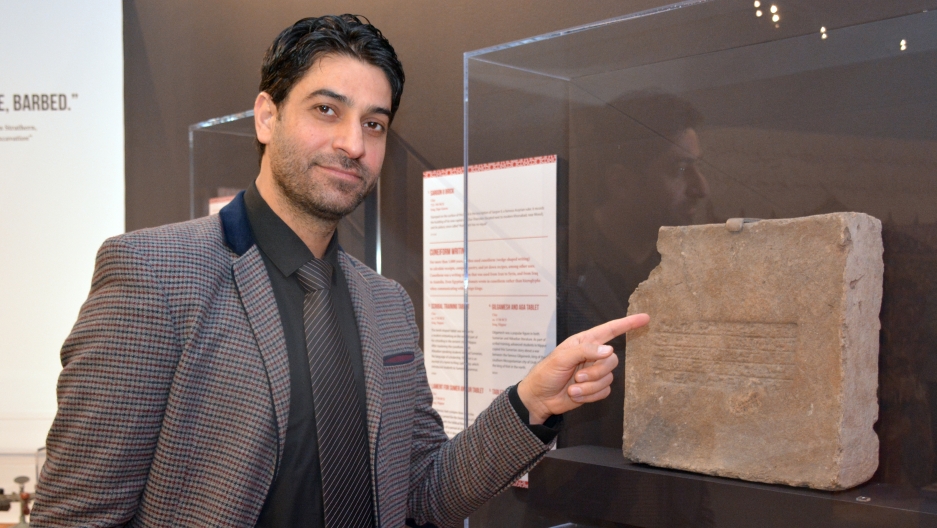
Prior to working at Penn Museum in Philadelphia, Hadi Jasim was an Iraqi translator for the US military. Credit: Courtesy of Thomas Stanley, via PRI
Experts: Federal Policy Change Would Harm Transgender Students
As the Trump administration moves to conservatively define gender under Title IX, there are implications for transgender students on college campuses. (Diverse Education)
This Philadelphia Museum Hired Iraqi and Syrian Refugees as Tour Guides for Its Middle East Gallery
“Being close to your heritage is something that makes you feel like okay, now I’m back. You know, I don’t feel like I’m a stranger [any] more.” (PRI)
Archives of American Art Announces Pivotal Gift from the Roy Lichtenstein Foundation
The $5 million gift will be put towards digitizing material on art and artists from historically underrepresented groups. (Art Fix Daily)
Professors Are the Likeliest Mentors for Students, Except Those Who Aren’t White
A recent survey shows just 47% of alumni of color said they’d had a mentor on the faculty, compared with 72% of white graduates. (Chronicle of Higher Education)
The ‘Decolonization’ of the American Museum
Museums are changing how they view themselves. (Washington Post)
A Humanities Degree Is Worth Much More Than You Realize
Enhancing the public’s understanding of how the humanities can help meet the economic, political, and technological challenges of the future is essential. (The Hill)
Paul Catanese and Greg Pond
posted by CAA — October 29, 2018
The weekly CAA Conversations Podcast continues the vibrant discussions initiated at our Annual Conference. Listen in each week as educators explore arts and pedagogy, tackling everything from the day-to-day grind to the big, universal questions of the field.
CAA podcasts are now on iTunes. Click here to subscribe.
This week, Paul Catanese and Greg Pond discuss intermedia pedagogy and research.
Paul Catanese is an associate professor at Columbia College Chicago where he directs the graduate program for the Art and Art History Department; he’s been known to fly kites, launch rockets, pilot drones, and lately a blimp as part of his art practice.
Greg Pond is professor of art at Sewanee: The University of the South in Tennessee. Originally from Portland, Oregon, Pond is one of the founder’s of Nashville’s Fugitive Projects and a sculptor who incorporates sound, video, and digital media into his practice and also makes documentaries about social justice issues in inner city Kingston, Jamaica.
New in caa.reviews
posted by CAA — October 26, 2018
Joanne Allen reviews The Medieval Salento: Art and Identity in Southern Italy by Linda Safran. Read the full review at caa.reviews.
Blake Stimson writes about Revoliutsiia! Demonstratsiia! Soviet Art Put to the Test, edited by Matthew S. Witkovsky and Devin Fore. Read the full review at caa.reviews.
Shira Brisman discusses Animating Empire: Automata, the Holy Roman Empire, and the Early Modern World by Jessica Keating. Read the full review at caa.reviews.
Rebecca Corbett explores Around Chigusa: Tea and the Arts of Sixteenth-Century Japan, edited by Dora C. Y. Ching, Louise Allison Cort, and Andrew M. Watsky. Read the full review at caa.reviews.
Nicholas Miller writes about Archibald Motley Jr. and Racial Reinvention: The Old Negro in New Negro Art by Phoebe Wolfskill. Read the full review at caa.reviews.
International Review: L’Algérie de Gustave Guillaumet by Roger Benjamin
posted by CAA — October 26, 2018
The following article was written in response to a call for submissions by CAA’s International Committee. It is by Roger Benjamin, professor of art history, University of Sydney, Australia.
Exhibition review: L’Algérie de Gustave Guillaumet (1840-1887), Musée des Beaux-Arts de La Rochelle (France), June 8-September 17, 2018
In a most unassuming regional museum in France, an exhibition of real art-historical significance opened this past June. For the first time since 1899, the work of the preeminent French Orientalist painter of the later 19th century has been brought together. Gustave Guillaumet is not an obscure artist, as every survey of Orientalism since the great Royal Academy show of 1984 has included his paintings. But the scholarly work had not been done until now, when the fruits of Marie Gautheron’s 2015 doctoral dissertation on the desert and Guillaumet have been brought to bear (Gautheron, M., L’invention du désert: émergence d’un paysage, du début du XIXe siècle au premier atelier algérien de Gustave Guillaumet (1863-1869), Paris Nanterre University).
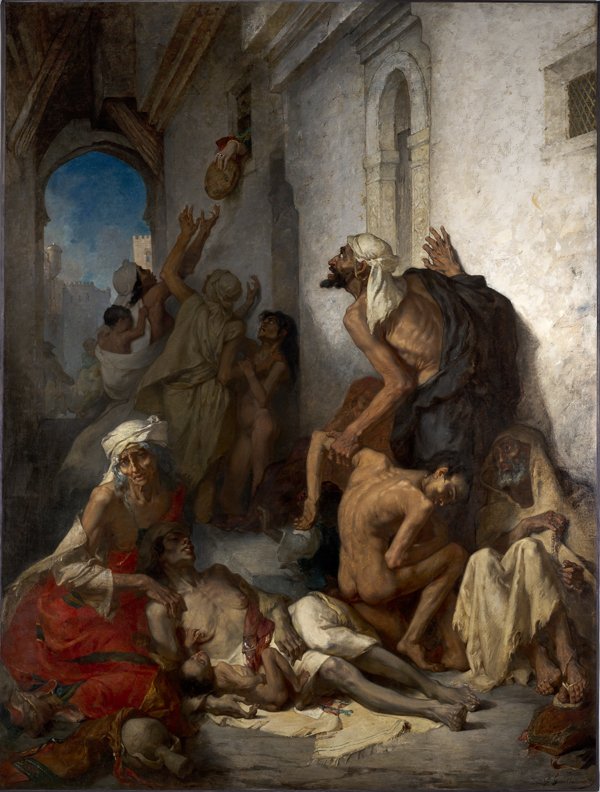
Fig. 1. Gustave Guillaumet, La Famine en Algérie, Salon of 1869, oil on canvas, 122 x 92 in (309 x 234 cm) Le Musée National Public Cirta de Constantine, Algeria (restored for the exhibition).
Many of the works on view in La Rochelle are unfamiliar, coming from regional museums, the artist’s descendants, private enthusiasts, and storage collections of the Musée d’Orsay. The largest single work was thought to have been lost. The Famine in Algeria (Fig. 1), the most disturbing large scale canvas at the Salon of 1869, was known only by a poor woodcut and several drawings. Its subject was altogether too tough—the cadaverous members of two Arab families expiring on the pavement of a city in what was (in French law) a department of France, the province of Algiers in Algeria.
La Famine had been languishing, rolled up and torn in the basement of the National Public Museum of Constantine, Algeria (Le Musée National Public Cirta de Constantine). The research of Dr. Gautheron located it, and through the goodwill of Algerian curators and the political weight of Maître Salim Becha (an Algiers-based lawyer, art collector and philanthropist) the work was sent to France for restoration. A successful crowd-funding campaign led by Annick Notter, chief curator at La Rochelle, paid for the conservator Pascale Brenelli, who spent nine hours every day from early February until mid-June resurrecting the picture.
Guillaumet’s ghastly image of a baby suckling at the collapsed breast of its dead mother goes back through Eugène Delacroix to Nicolas Poussin and classical precedents. Entirely new, however, is his angular figure of an emaciated Arab father who, supporting his fainting teenage son, reaches up for a loaf of bread being handed down from the tiny window of a prosperous home. The outstretched hand is female, bejeweled and, through the curvature of its fingers, evocative of the Jewish beauties painted by Chasseriau in Constantine (1846) and by Delacroix in Tangier (1832).
La Famine’s grisly treatment was probably influenced by photographs of the dying taken in situ. Catalogue author (and leading historian) Jacques Frémaux estimates one third of the indigenous population of Algeria died in the famine of 1866-70, due to drought, locust plague, cholera, and the expropriation of farmlands by European settlers. La famine is unrelieved by aesthetic ‘sweet spots’ like the majestic horseman that Delacroix placed in his Massacres of Chios. We have instead the moral and visual austerity that pervades Guillaumet’s work. A grave witness to these events, Guillaumet was not about to beautify them.
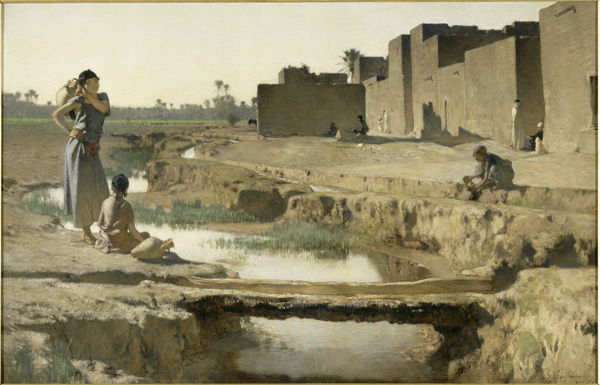
Fig. 2. Gustave Guillaumet, La Séguia, près de Biskra, oil on canvas, 1884, Salon of 1885, 39 x 61 in (100 x 155.5 cm), Musée d’Orsay, Paris.
Almost all of the artist’s best-known landscapes are on view, including The Sahara of 1867, with its camel skeleton and mirage at the horizon with a setting sun, and the dazzling Séguia, Biskra (Fig. 2) of 1884. (Both are usually on display at the Musée d’Orsay). The loan of numerous restored pencil drawings and watercolors from the Orsay was intended to show the genetic relationship between such studies and the resultant tableaux by Guillaumet (who narrowly missed the Prix de Rome for landscape and ended up heading to Algiers in 1862 rather than Rome). (Fig. 3)
It came as a shock to learn that many of these drawings could not be exhibited on the second floor of the eighteenth-century mansion that houses the Musée de la Rochelle, as it was condemned by city architects one week before the scheduled opening. Despite the best efforts of the staff, this major exhibition was opened in almost third world conditions: a building with the floor above held up by a dozen massive steel columns, no air conditioning, and inadequate spotlighting. Yet historic La Rochelle is a wealthy city, with a new 5,000-boat marina and an opulent public library, the Mediathèque, nearby. City and provincial authorities must reward the enterprise of its art curators by providing an adequate home for future temporary exhibitions and permanent collections.
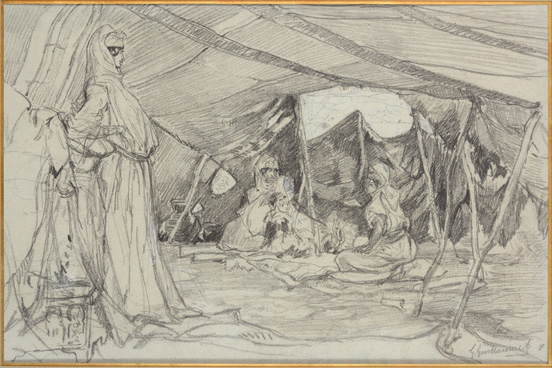
Fig. 3. Gustave Guillaumet, Sous la tente, graphite pencil on paper, 9.5 x 17 in (24 x 44 cm), private collection. Photo: A. Leprince.
Fortunately, L’Algérie de Gustave Guillaumet will travel to two other regional museums in much better condition: the Limoges Fine Arts Museum and the celebrated La Piscine, a converted Art Nouveau baths complex in the northern city of Roubaix. And happily, the catalogue, a scholarly book with first-class production values and superb plates, perfectly represents the project. Its backbone is the set of four chapters by Gautheron, a former academic teaching art history and visual culture at the École normale supérieur de Lyon, along with detailed entries on key works and a documentary apparatus at the end. Gautheron was careful to enlist a range of other writers, including Algerian literary figures like Leïla Sebbar, and art historians from Algeria, the United States, Australia, France, and Ireland. For her part Gautheron has also completed a 300-page monograph on Guillaumet that is awaiting publication.
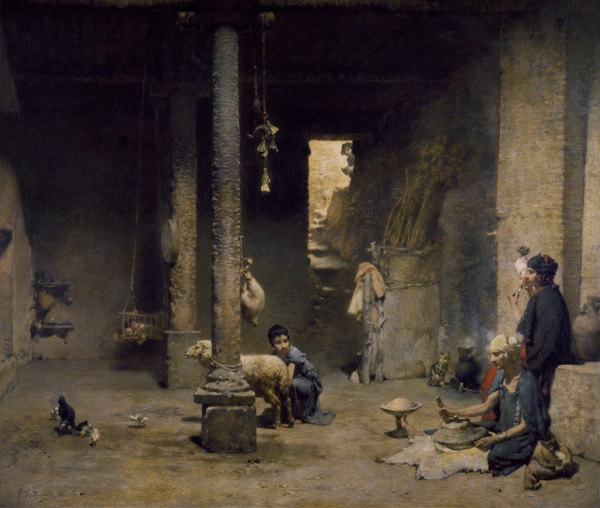
Fig. 4. Gustave Guillaumet, Habitation saharienne (Cercle de Biskra), Salon of 1882, oil on canvas, 58 x 68 in (146.1 x 173.4 cm), Chrysler Museum of Art, Norfolk, Virginia, gift of Walter P. Chrysler, Jr.
Guillaumet, like the admirable Eugène Fromentin before him, traveled initially in Algeria in close connection with the officers of the French army and its political wing, the Bureau Arabe. His stunning series of interiors of Arab houses, made in the oasis villages of Biskra and Bou-Saâda, were made possible by the intervention of the Commandant’s wife (as the artist narrates in his text “Les intérieurs,” from his book Tableaux Algériens). Crowning the series but absent from the exhibition was the key Guillaumet work in America, Saharan Dwelling (Fig. 4), recently loaned by the Chrysler Museum of Norfolk Virginia to the Institut du Monde Arabe in Paris (see the author’s Biskra, Sortilèges d’une oasis, Paris and Algiers, 2016, pp. 90-91). Scenes of women and their daughters working at looms, the first of their kind and highly influential on the next generation, complement Guillaumet’s earlier assemblages of men, camels and horses on the barren plains—at prayer, at market, or on a military bivouac. Guillaumet, an admirer of J. F. Millet, produces high naturalism, except in one key respect: he always excludes the colonizer and his works. Absent are the soldiers in uniform, colonists directing Berber farmworkers, the modern buildings and telegraph wires at Bou-Saâda, the military hospital at Biskra where the painter convalesced in 1862, or the British tourists who by the 1880s were encumbering the desert scene. Guillaumet’s vision is not a “painting of modern life” as exemplified by the traveler Constantin Guys in Istanbul. It is an image of Algeria as it used to be: a country and a people that won the admiration of foreign travelers, intellectuals and officers, even as their invasive actions helped bring about its demise.
Member Spotlight: Pauline Chakmakjian, Visit Kyoto Ambassador
posted by CAA — October 25, 2018
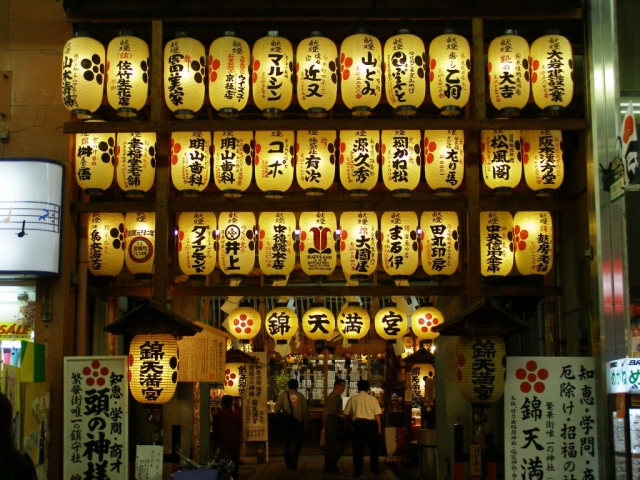
Lanterns lit in Teramachi Street, Kyoto. Photo: Pauline Chakmakjian, MA
Coming up in the spring of next year, we’re pleased to partner with Martin Randall Travel to offer a trip for scholars and artists to Japan. “Understanding Japan for CAA – Arts & Crafts, History, Religion & Traditions” will take place May 9-20, 2019, and will be led by independent Japan scholar and CAA lifetime member, Pauline Chakmakjian.
As a lifetime member and a specialist who lectures on a variety of subjects related to the history, fine arts, and culture of Japan, we wanted to highlight the work Pauline is doing in our Member Spotlight series. Read our interview with her below.
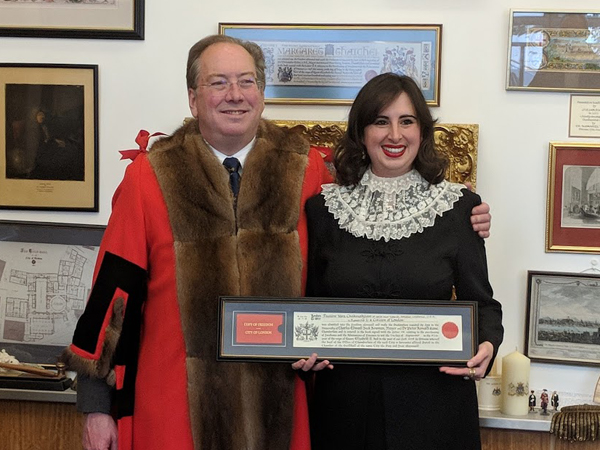
Pauline Chakmakjian, Freeman of the City of London, September 2018. Photo: Pauline Chakmakjian, MA
Joelle Te Paske: Hi Pauline. Thanks for taking the time to answer our questions. So to begin, where are you from originally?
Pauline Chakmakjian: I was born in Los Angeles, California.
JTP: What pathways led you to the work you do now?
PC: My primary passions are travel and the arts. The associations and networks I have developed throughout the years have naturally led to projects that combine this fondness for both cultural variety and the diversity of thought and creativity in various countries, especially Japan.
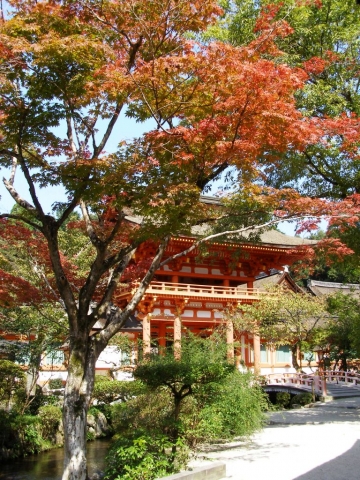
Temple in Kyoto. Photo: Pauline Chakmakjian, MA
JTP: When did you first become a CAA member?
PC: In the summer of 2015, in order to support art and art education.
JTP: Why are you a life member? What has that meant to you?
PC: I think in a long-term manner and carefully select organizations to support that reflect my own interests. With time, becoming a life member will increase in value for me personally, since CAA is focused on art and art makes life exceptionally rich and pleasant. My preference is to support things that encourage creativity and beauty—arts and culture are what makes us human.
JTP: Have you attended CAA conferences?
PC: I have not yet had the pleasure of attending a CAA conference due to my previous travel commitments, but certainly plan to in the future.
JTP: The upcoming tour—“Understanding Japan for CAA – Arts & Crafts, History, Religion & Traditions”—is specifically designed for CAA members. What are you most excited for?
PC: The Kyoto part of the trip, which is towards the end of the tour, of course! In so many ways, the old capital of Kyoto is the heart of Japan, from artistic and culinary traditions that are over one thousand years old, to the eternal backdrop of the tastes and pastimes of the nobility of the Heian-period court, which have cascaded down to influence generations of Japanese people ever since.
JTP: What is the most surprising thing for people to know about Japanese art history?
PC: There are many surprises for those who have never been to Japan or studied its artistic heritage, but if I had to choose one it would be that much of the traditional look or aesthetics of Japanese art are manifestations of the preferences of the upper tiers of the hierarchical class system the Heian court of one thousand years ago, borrowed from the ancient Imperial Chinese court in Chang’an (Xian). The upper two tiers consisted of the Emperor and his retinue of courtiers first, and then the warrior class. These two classes were largely responsible for the distinctive elements and emphases found in Japanese art, from landscape architecture to painting to teaware.
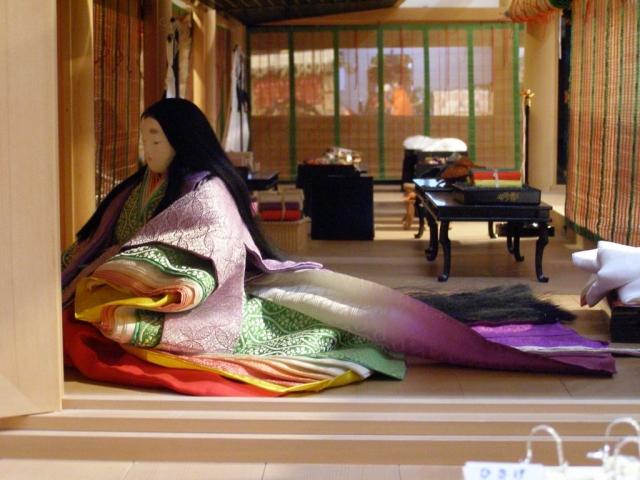
Doll of Lady Murasaki Shikibu, Kyoto. Photo: Pauline Chakmakjian, MA
JTP: Can you tell our members one unforgettable travel story?
PC: Yes, sailing to Easter Island was probably the most adventurous thing I’ve attempted travel-wise. From Tauranga to Hanga Roa I was on board a two-masted brigantine with a permanent and voyage crew for 33 days of sailing across the Pacific. I had always wanted to visit Easter Island and this travel journey combined this dream with my love of classical sailing ships. We were also given instruction on celestial navigation over the course of the sailing experience.
The image that stays in one’s mind and feeling of sailing through a gale force 8 storm at the helm is thrilling. I love paintings by Montague Dawson and this was like one of his paintings in motion.
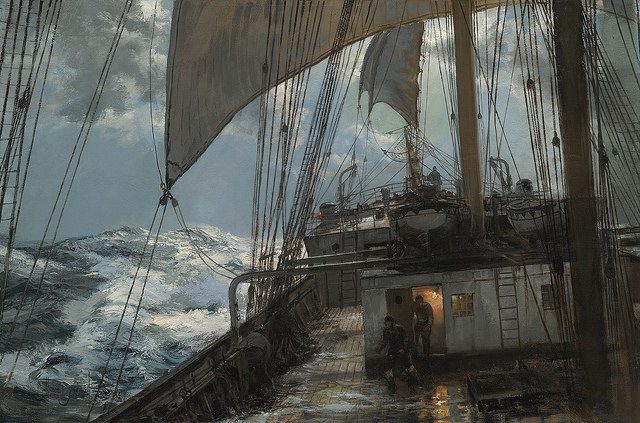
Montague Dawson, A Night at Sea, n.d. (Artwork in the public domain, via Flickr)
JTP: What advice would you give someone looking to partner with travel agencies and lead the sort of tours you do?
PC: A broad range of knowledge on the destination is essential. Though the focus is usually on the arts in terms of cultural travel companies, the tour leader will be asked about the other aspects of the country such as its politics, economy, technology, and other areas, so it’s not enough to simply know about fine art, music, and the performing arts.
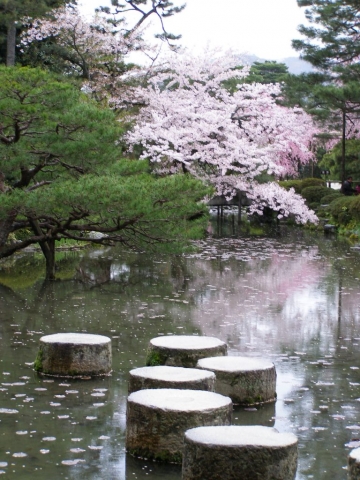
Heian Shrine, Kyoto. Photo: Pauline Chakmakjian, MA
JTP: What is your top recommendation (such as a book, website, or resource) for people working in the arts right now?
PC: There are so many resources both offline and online depending on one’s particular focus or interest in the arts, but I do quite like the international edition of The Art Newspaper. It’s particularly handy for people who travel a lot.
JTP: Do you have a favorite artist or artwork?
PC: This is difficult to answer as there are so many talented people who have created beauty of various types in this world, but the moment that made me want to lecture on art was during my undergraduate studies after I gave a talk for over an hour on The Garden of Earthly Delights by Hieronymous Bosch. This triptych is truly one of the most unique and extraordinary works of art ever made. The eccentricities within each section of the triptych as well as Bosch’s personal associations is what also partly made me curious about private, esoteric networks such as Freemasonry, which I also lecture on.
Pauline Chakmakjian is an independent lecturer on a variety of subjects related to the history, fine arts and culture of Japan. She lectures for private member societies, corporate entertainment, private homes, universities, cruises, charities and other related organizations including lecture tours in Australia and New Zealand. She holds a BA in English Literature during which she was also awarded a Merit Scholarship in Fine Art, a Diploma in Law, an MA in Modern French Studies and is a member of the Honourable Society of the Inner Temple. Pauline was elected onto the Board of the Japan Society of the United Kingdom from 2008–2014 and the Japan Society of Hawaii from 2015–2017. In 2014, Pauline was appointed a Visit Kyoto Ambassador by the Mayor of the City of Kyoto.



